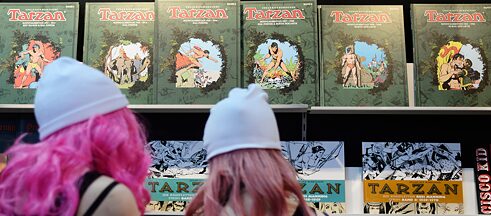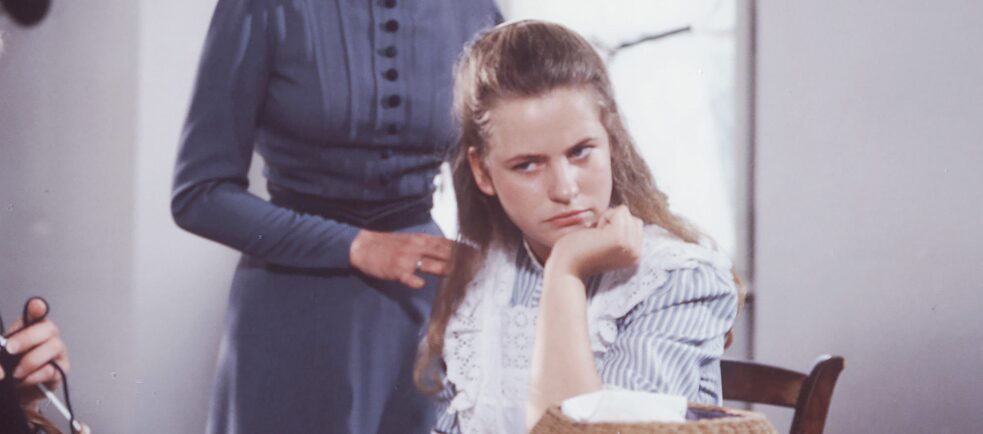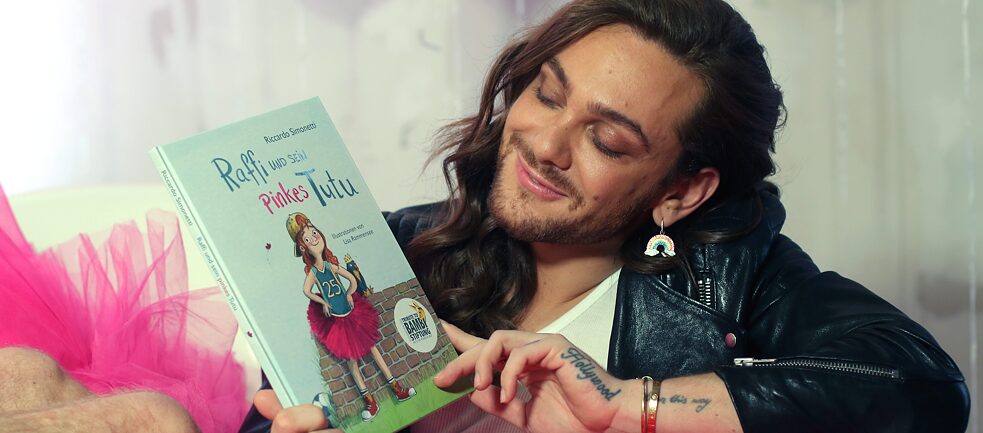Children’s and young adult literature
Neither pink nor blue

How much do books for children and young adults reinforce gender stereotypes? Literature expert Marlene Zöhrer argues that the book scene has never been as diverse and liberal as it is today.
Literature for children and young adults reflects the world children live in along with social conditions, values and norms. This means the stories told in words and pictures are essentially products of their time. Such as Emmy von Rhoden’s classic book for girls, Der Trotzkopf (The Headstrong Girl), first published in 1885, which corresponds to the image of women and educational ideals that were common at the time. Today though, the story of Ilse, who is packed off to boarding school to be moulded into a proper and, above all, marriageable lady, seems exceedingly outdated. And yet in autumn of 2020, Der Trotzkopf was released as an audiobook narrated by Heike Makatsch. How can this be? Is literature for children and young adults really so regressive that it clings to long-outdated gender roles and seeks to reinforce them?
 A classic children’s book with an outmoded female role model: “Der Trotzkopf” (The Headstrong Girl) from 1885 was not only filmed almost a hundred years later (1983); it was also issued as an audio book with Heike Makatsch in 2020.
| Photo (detail): © picture alliance / United Archives
A classic children’s book with an outmoded female role model: “Der Trotzkopf” (The Headstrong Girl) from 1885 was not only filmed almost a hundred years later (1983); it was also issued as an audio book with Heike Makatsch in 2020.
| Photo (detail): © picture alliance / United Archives
More equal and diverse than ever before
The answer to this question is a clear and resounding no. Books for children and young adults today are more equal, diverse and liberal than ever before. This is not to say that they, like society itself, do not still have a long way to go when it comes to widespread equality and breaking with traditional gender roles.
It is difficult to accurately assess just how emancipated today’s literature for children and young adults really is. A purely quantitative survey of the degree of equality and the treatment of gender roles would only provide incomplete information. Evaluating lists of keywords alone, for example, would fall short because literature is so much more than just the sum of its keywords. This could never capture ambivalence in how characters are portrayed, nor would it illustrate how stereotypes or plots are sometimes constructed to play with clichéd portrayals or ironically break with them.
A look at the cover designs or the books on offer in the children’s or young adult section is not necessarily meaningful, since the designs employ fashionable colours and familiar visuals with marketing and sales figures in mind. The content of a bookstore display is more a reflection of the particular bookseller’s point of view, who has selected which books to stock from the backlist and the more than 8,500 new books for children and young adults published every year in German alone. If booksellers do not take a particularly critical approach to gender marketing and traditional gender portrayals, or if customers are specifically asking for and buying such books, this will be reflected in the shelves and displays. The next bookstore might present a completely different picture of books for children and young adults.
Covers and titles can be misleading
At any rate, a close look at the book market reveals the large number of books – picture books, books for older children and young adults, and nonfiction – that take an exemplary approach to gender roles and depict an egalitarian coexistence without gender-role clichés. They are often much more difficult to identify than books that employ stereotypes or traditional patterns though, precisely because equality is taken for granted. They do not use brash signal colours or buzzwords. It is also important to note that sometimes books with a topic or look that leads you to expect traditional images of girls or boys and the classic distribution of roles can surprise you in a good way. And conversely, some that lay claim to literary sophistication ultimately make readers cringe at the clichés they contain. There is no generally applicable rule of thumb and covers and book titles can be particularly deceptive. The author’s general orientation is a much more reliable predictor here: Anyone who has produced a text with a prejudice-free worldview will usually carry this on into other books.
 Gender roles in books for children and young adults: Many new publications break with the usual clichés, such as Riccardo Simonetti’s “Raffi und sein pinkes Tutu” (Raffi and his Pink Tutu) released in 2019.
| Photo (detail): © picture alliance / Mika Schmidt
To return to our original premise: books for children and young adults always convey the values and attitudes of the time in which they were written. So anyone interested in children's and young adult literature with positive role models and with educational value will need to look around for appropriate books. Another way to advance discourse on this issue is to use older books to start a conversation about outdated gender roles and the presence and value of equality.
Gender roles in books for children and young adults: Many new publications break with the usual clichés, such as Riccardo Simonetti’s “Raffi und sein pinkes Tutu” (Raffi and his Pink Tutu) released in 2019.
| Photo (detail): © picture alliance / Mika Schmidt
To return to our original premise: books for children and young adults always convey the values and attitudes of the time in which they were written. So anyone interested in children's and young adult literature with positive role models and with educational value will need to look around for appropriate books. Another way to advance discourse on this issue is to use older books to start a conversation about outdated gender roles and the presence and value of equality.